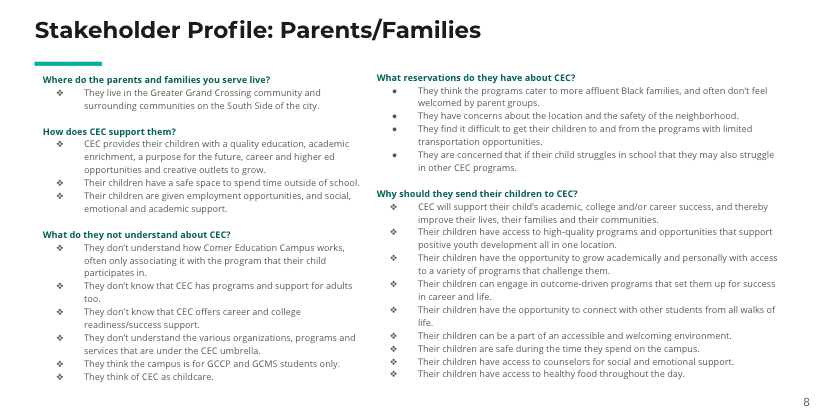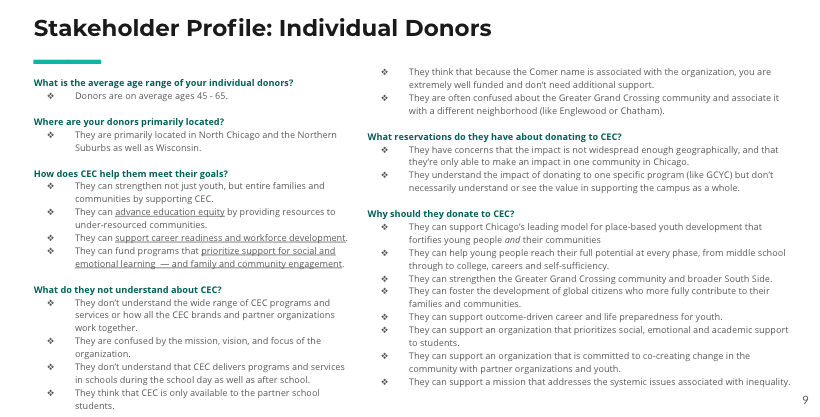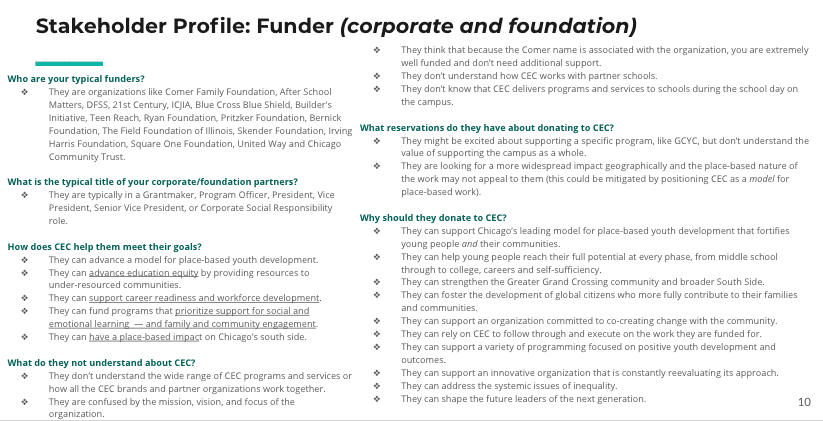If your nonprofit is like most, you don’t have budget to spare on “trial and error” marketing efforts. That’s why it’s crucially important to understand the stakeholders you are aiming to reach with your marketing and communications efforts through stakeholder and donor profiles. The better you understand your donors, program participants, volunteers, members and other stakeholders, the more mileage you’ll get out of your marketing investments, and the more successful you’ll be at motivating people to take actions that advance your mission.
[bctt tweet=”The better you understand your stakeholders, the further you’ll advance your mission.” username=”prosperstrat”]So how can you truly come to understand the stakeholders you’re looking to reach? Stakeholder profiles are a great place to start.
In this post, we’ll share a process for creating a nonprofit stakeholder or donor profile and tips on how to use it to your organization’s advantage. But first, let’s cover the basics.
What is a nonprofit stakeholder?
When nonprofit marketers think about their target audience, they often focus first and foremost on donors. But as we’ve discussed before, fundraising is only one of the many important roles marketing should play, and you therefore need to think far beyond your donors when considering your communications targets and the various people who have a stake in your nonprofit’s success. Your stakeholders include any and everyone who is impacted by or can make impact on your organization.
As Joanne Fritz helpfully explains, nonprofit stakeholders generally fit into three groups:
Constitutional stakeholders: board members, trustees or management committee members
Contractual stakeholders: paid staff, funders and donors, or any group that has a formal relationship with your organization
Third-party stakeholder: those affected by your organization’s services, like your program participants, members, beneficiaries and those who live in your local community
What is a stakeholder or donor profile?
A stakeholder or donor profile is a personified description of an “average” person in a specific stakeholder group, informed by research, that helps you and others at your organization understand that group’s demographics, psychographics and communication preferences.
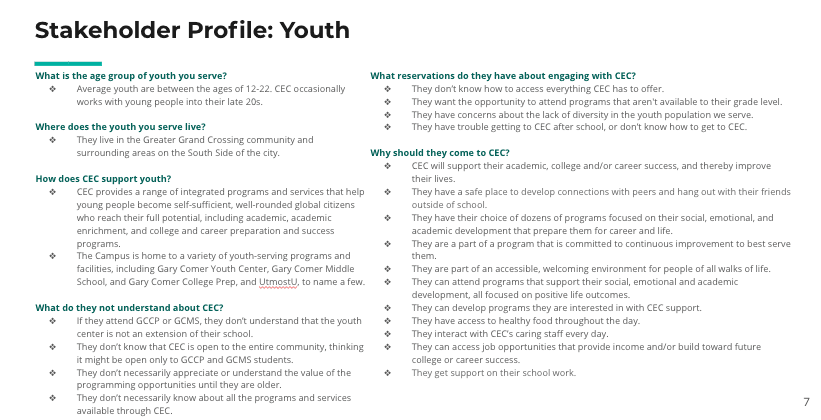
Create a stakeholder profile in three steps:
Creating an effective stakeholder profile requires robust research, but it isn’t rocket science. Here’s a three-step process you can get started with today.
Identify and prioritize your most important stakeholders
Begin by making a list of all of your organization’s stakeholders.
Depending on your nonprofit’s model and service area, your stakeholders could include groups like your:
- program participants
- donors and funders
- staff
- volunteers
- members
- beneficiaries
- partner organizations and other nonprofits
- board members or trustees
- local community members, including community leaders, public officials and institutional leaders
Then, rank each group on a scale of one to ten using the questions below:
- What is this stakeholder’s potential impact on our organization’s future success?
- What is this stakeholder’s receptivity to marketing/communication?
- What is this stakeholder’s influence on other key stakeholder groups?
You can also download and use our stakeholder profile worksheets, which includes an editable table like this one, to rank your stakeholders by priority.
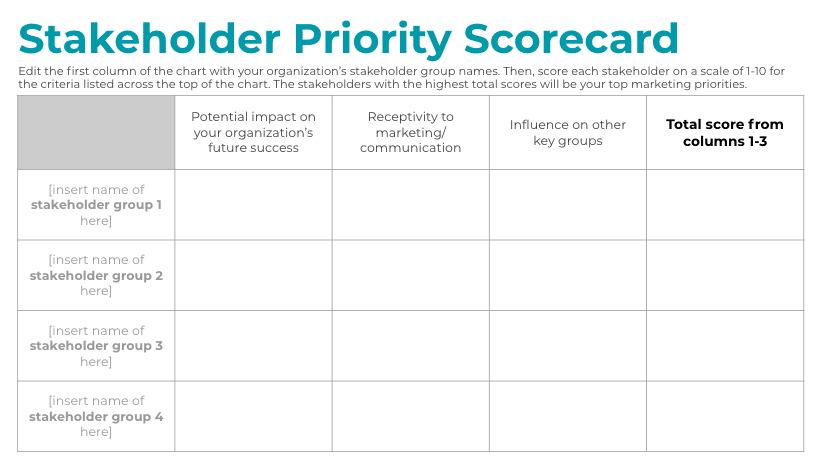
Research and interview your donors
Research is the most important component of developing effective stakeholder and donor profiles. It’s the only way to accurately answer questions like:
- What does this stakeholder care about?
- What does this stakeholder expect from our organization?
- What are their goals for a relationship with our organization?
- Why would this stakeholder want to take a specific action that impacts our organization, such as donating money or volunteering at an upcoming event? What might hold them back?
- Where does this stakeholder get their information and who or what influences their decisions?
First, conduct secondary research for your stakeholder and donor profiles to find as many answers to these questions as you can. You might look to government data, media coverage (especially trade and philanthropic publications), and your own donor database to get a sense of how your stakeholders think and act. LinkedIn, Twitter and Facebook profiles can also give you a window into specific individuals who are representative of the stakeholders you’re looking to target.
Then, if possible, conduct primary research: surveys, roundtables, small group discussions and interviews with existing stakeholders and those who interact with them most, including your organization’s leadership and program staff. Identify the gaps in your secondary research and ask the questions that will fill any missing pieces, like why a stakeholder decided to partner with your organization and what hesitations they had before they did. These settings are where the richest stakeholder insights often emerge.
Draft stakeholder and donor profiles
Now, use your research to develop personified descriptions of a representative individual from each stakeholder group.
Describe what each stakeholder cares most about, their challenges, and how your organization addresses their needs. These can be based on a real person your organization already knows, but shouldn’t be a profile of any specific individual. Instead, a donor profile will highlight the common traits of an entire stakeholder group so you can come to understand the best way to speak to and motivate the group as a whole.
After the donor profiles are complete, these should feel like people that you know and could have a conversation with.
Here are a few examples of stakeholder profiles:
While these questions can provide a good starting point, they’re definitely not the only ones you can ask. Other questions you can address in a stakeholder or donor profile include:
- Why would this stakeholder choose to support your organization over another?
- How can you address any concerns this stakeholder may have about your organization?
- What is this stakeholder’s key driving motivation?
- How has this stakeholder experienced organizations like ours in the past?
Using your stakeholder and donor profiles
To actually make use of your donor profiles, first ask yourself what do you need to encourage your stakeholders to do. Do you want to motivate them to donate or take some other action critical to your organization? How do you convince them to act? Consider their needs and expectations in relation to your mission and strategic direction. To what extent can you meet those needs and expectations?
Then, use the profiles you created to draft key messages and inform all future communication efforts, including website copy, marketing emails, collateral, social media content and blogs. You can also review those key messages before entering a meeting with a member of a stakeholder group to get yourself in their mindset and focus on their pain points. The applications of a high quality stakeholder profile are almost endless.
[bctt tweet=”With donor profiles, you’ll understand your audiences and further your organization’s impact.” username=”prosperstrat”]Once you develop stakeholder profiles, you’ll be able to better understand your organization’s key audiences and speak to them directly with effective messaging that furthers your organization’s impact.
Looking for more resources on nonprofit communications?
See all our tools here.
